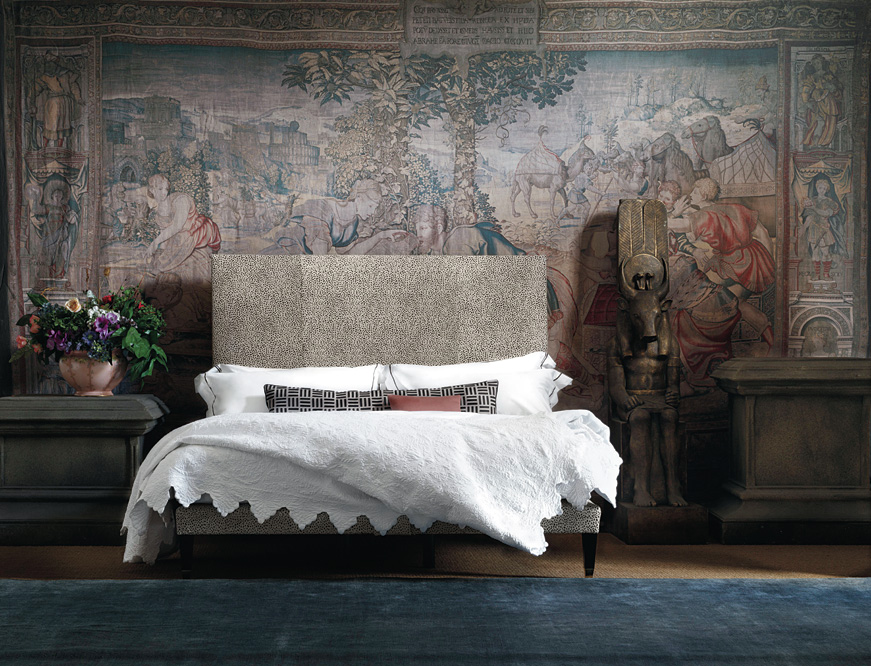When was the last time you got a solid 8 hours of sleep?
For many of us, distractions and responsibilities can impede a restful night’s sleep, and we definitely aren’t alone—according to AIA’s Asia-Pacific-wide Healthy Living Index 2016, Hong Kong adults are the most sleep-deprived in the entire Asia-Pacific region. When better to address this problem than World Sleep Day? Established by the World Association of Sleep Medicine, the event aims to raise awareness about healthy sleeping and about various sleep issues—including sleep deprivation.
To learn more about how to get the best quality snooze, we spoke to Mandeep Dillon and Ramon van de Nobelen of British luxury bed and mattress purveyor, Savoir Beds. The company created its first bed for The Savoy London in 1905, and has been providing top-quality beds and bespoke services ever since. Read on to discover how to arrange your bedroom and how to pick a bed and mattress for an ideal night’s rest.
See more: Ask the Experts: 8 tips for designing your bedroom

What are some interior design elements that can be infused into a bedroom in order to make it a relaxing space conducive to sleep?
Ramon van de Nobelen: A relaxing space conductive to sleep always needs to be quiet, dark, and tranquil. Use good insulation in windows and walls. Soft materials in the room which absorb sounds will absolutely help. Use good blinds and thick curtains which will keep sunlight and street light out. Ventilation is important. Keep your bedroom dust-free. Use still colours, not aggressive ones. No red. Leave big mirrors out.
Mandeep Dillon: Imagine your bedroom as a sanctuary. When you walk in—or simply think about your bedroom—it should make you feel relaxed and peaceful. Taking care of your sleep environment and putting thought into its look and feel is important, and could help you welcome more restful nights. Declutter your room. Arrange your furniture so that it’s pleasing to the eye. Keep computers and phones in another room so that you’re free from distraction. Use calming wall colours, as well as blankets and candles to create a relaxing mood.
See more: Create a peaceful haven that’s conductive to a good night’s rest

What should one keep in mind when choosing a bed?
Ramon: A mattress should not be too hard. The ideal would be to feel as though you’re floating on a cloud. Comfort is key—but you also need a balance between softness and support. The bed frame needs to be the right height: not too high or too low. Certainly not too wide. You want to be able to get in and out easily. No sharp edges or corners. Smooth and polished will do the trick.
Mandeep: For your mattress, choose natural, breathable, chemical-free materials—such as cotton and horse tail—to avoid the many hygiene issues that you may face with synthetic materials—such as foam—which will affect the life of your mattress. Synthetic fibres, latex, and memory foams tend to cause sweating and deteriorate over time, but animal fibres such as wool and horse tail channel moisture away, helping to regulate body temperature all year round and improving the quality of REM sleep.
What the mattress sits on makes a big difference. A sprung divan base, or box spring, gives the mattress the best possible support, adding to the comfort and extending its life. A slatted base has a degree of flexibility, but cannot match a sprung base. A firm base gives level support, but will firm the mattress up and reduce its life.

Image courtesy of Marjot/ThinkStock
Is there any way to test whether a mattress is right for you before buying?
Mandeep: A mattress should be designed to support your spine and keep it straight. Given you spend a third of your life in bed, it is worth taking some care when buying one. When testing one out, take your coat off and wear loose clothing—unless you make a habit of going to bed dressed to the nines. Take a book with you to read and make a day of it. You are bed for 6 to 8 hours a night, so don’t rush the choice. Lie down and roll around. You can tell nothing from simply sitting on the edge of a bed, and there is no point lying as if on a mortuary slab if you usually sleep on your side. Ask a friend or showroom assistant to look at your position and ensure that the support is correct. You should look as you do standing up; make sure your hips do not sink in too much or stick up too far. While lying on your side, there should be no gap between your waist and the mattress. Your bed should be soft enough to meet and support this area. We recommend being properly fitted by a specialist salesperson, who will be able to tell you how well you are supported, before you buy your new bed.
The post On World Sleep Day, discover the ideal bed and bedroom setup for a full night’s rest appeared first on Home Journal.






